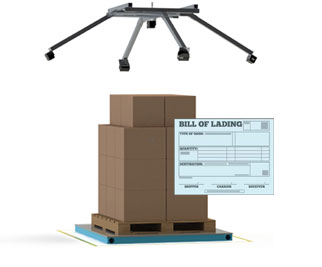
by logisticsplus | Jan 12, 2017 | News
 Bill of lading accuracy is as important as ever. The BOL is a legally required document that must be completed before a freight shipment is hauled. A BOL protects both the carrier and the shipper. The document contains detailed information on the type, quantity and destination of the goods being carried. The issuance of the BOL is proof that the carrier has received the goods from the shipper, or their 3PL, in apparent good order and condition, as handed over by the shipper.
Bill of lading accuracy is as important as ever. The BOL is a legally required document that must be completed before a freight shipment is hauled. A BOL protects both the carrier and the shipper. The document contains detailed information on the type, quantity and destination of the goods being carried. The issuance of the BOL is proof that the carrier has received the goods from the shipper, or their 3PL, in apparent good order and condition, as handed over by the shipper.
Until recently, LTL carriers tolerated some “bending of the rules” regarding accurate freight weights, classifications, and dimensions detailed on the BOL. New tools are helping carriers efficiently and objectively assess freight. Many LTL terminals now use forklifts with embedded scales. Terminals are also using ceiling-mounted systems that measure the dimensions and density of every piece of freight.
As a result of these new technologies, and recent rules tariff changes, carriers are tolerating BOL discrepancies no longer. Today, carriers are pursuing every penny of revenue they can get. LTL carriers, in particular, are strictly enforcing terms and policing discrepancies between reported and actual freight characteristics, leading to many unexpected fees for shippers. Freight descriptions that you may have used for years without problems might start triggering fees if they under-report any aspect of your freight’s true profile.
An accurate bill of lading is your best defense against these “weight & inspection” – or “W&I” – fees, and against possible rate changes resulting from “re-weighs” or “re-classifications.” Make sure to measure the dimensions of your LTL freight, including packaging, to the furthermost point in each direction. Some shippers measure the pallet rather than the freight when calculating dimensions. If the freight overhangs the pallet, the overhang must be included in the measurements.
July 2020 Update: With the NMFC now designating more commodities for density-based classifications, preparing an accurate BOL is as important as ever. If you note the wrong weight for a density-based product on your bill of lading, there is a good chance that the LTL carrier will re-weigh your shipment and charge you the higher rate using the same freight class you designated on your BOL rather than adjusting the freight class according to the new weight and dimensions. Specifically, this is how one carrier has worded their new rules tariff item specific to this situation: “In the case where the weight is changed on a shipment that is a density-based item in NMFC, the freight classification on the original bill of lading will be used unless the shipper or consignee can produce irrefutable supporting documentation showing clear evidence of the LxWxH and corresponding weight of each handling unit of the shipment.”
Logistics Plus stands ready to help shippers any way it can to avoid W&I fees. Our North American (NAD) operations team can provide consultation on accurate NMFC freight classifications and freight density calculations. We notify you whenever a carrier assesses an unintended W&I fee, and we manage the dispute if you have evidence the fee is not valid.
The freight experts at Logistics Plus will be happy to help you with any questions or issues regarding freight characteristics and bill of lading accuracy. Contact us using the button below or email us at nadops@logisticplus.net if you have any of these types of questions.

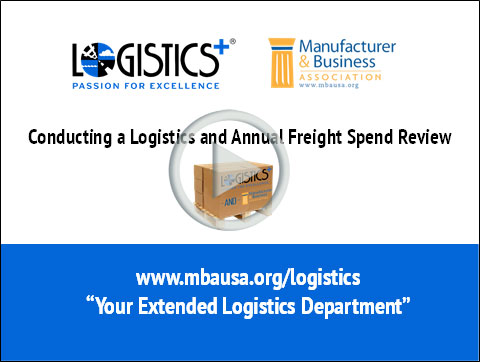
by logisticsplus | Dec 14, 2016 | News
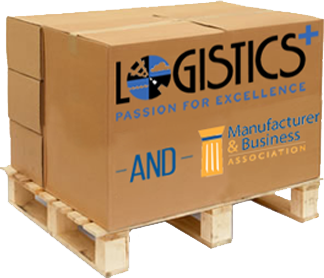 In today’s fast-paced environment, it’s often difficult to stop and review key areas that might be affecting the profitability of your business. Logistics is one key area that often gets overlooked. How much time and money are you spending on logistics? Are you measuring the total cost of your freight management activities? Through a “prepaid-and-add” approach, are your vendors charging you more for shipping than you realize for your purchased (inbound) goods? In addition to outbound and inbound freight charges, are you considering order preparation time, time-to-quote, personnel costs, owned-assets versus outsourced assets, inventory carrying costs, loss and damage claims, and insurance costs?
In today’s fast-paced environment, it’s often difficult to stop and review key areas that might be affecting the profitability of your business. Logistics is one key area that often gets overlooked. How much time and money are you spending on logistics? Are you measuring the total cost of your freight management activities? Through a “prepaid-and-add” approach, are your vendors charging you more for shipping than you realize for your purchased (inbound) goods? In addition to outbound and inbound freight charges, are you considering order preparation time, time-to-quote, personnel costs, owned-assets versus outsourced assets, inventory carrying costs, loss and damage claims, and insurance costs?
In this recorded Webinar we discuss:
- Top logistics challenges facing businesses today.
- Items your business should consider to reduce logistics expenses.
- The Logistics Plus® approach to a risk-free freight analysis.
This is part of an ongoing series of complimentary logistics-related webinars that are being provided to Manufacturer & Business Association (MBA) members. Past and future webinars cover additional transportation and logistics topics. Logistics Plus is the company that manages the MBA Logistics Program. Learn more at www.mbausa.org/logistics
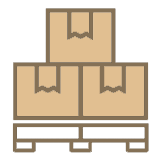
by logisticsplus | Nov 16, 2016 | News
Wondering whether your domestic freight shipment should move via parcel, less-than-truckload (LTL), or full-truckload (FTL) carrier? Here’s a quick cheat-sheet with some PROs and CONs to each of these ground transportation modes.
 Parcel Shipping: Shipments under 150 pounds and shipped in cartons (less than 108 inches long and 67 inches wide), rather than on a pallet, are often moved via Parcel shipping with carriers such as USPS, UPS, FedEx or regional courier services.
Parcel Shipping: Shipments under 150 pounds and shipped in cartons (less than 108 inches long and 67 inches wide), rather than on a pallet, are often moved via Parcel shipping with carriers such as USPS, UPS, FedEx or regional courier services.
- PROS: Fast service, many delivery options, readily available, lower shipping costs on smaller shipments.
- CONS: More chance of being lost or damaged, lower carrier liability limits per pound, few carrier options.
 Standard Less-Than-Truckload (LTL) Shipping: Shipments between 150 and 5,000 pounds are generally better moved using standard LTL carrier pricing with LTL carriers such as FedEx Freight, UPS Freight, YRC Freight, or regional freight carriers.
Standard Less-Than-Truckload (LTL) Shipping: Shipments between 150 and 5,000 pounds are generally better moved using standard LTL carrier pricing with LTL carriers such as FedEx Freight, UPS Freight, YRC Freight, or regional freight carriers.
- PROS: Relatively fast service, good availability, fewer damages, good with B2B deliveries, higher carrier liability limits pound.
- CONS: Complex pricing structure, higher shipping costs, not always suitable for non-palletized freight, not always great with B2C deliveries, minimal carrier options.
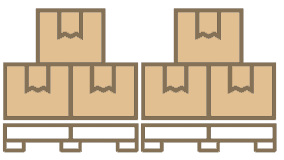 Volume Less-Than-Truckload (LTL) Shipping: Shipments between 5,000 and 10,000 pounds, or taking up more than 6 pallet spaces, are often moved more cost-effectively with a “volume” or “spot” quote. In these situations, the carrier will analyze the weight and dimensions of the shipment and provide a competitive “all-in” rate quote.
Volume Less-Than-Truckload (LTL) Shipping: Shipments between 5,000 and 10,000 pounds, or taking up more than 6 pallet spaces, are often moved more cost-effectively with a “volume” or “spot” quote. In these situations, the carrier will analyze the weight and dimensions of the shipment and provide a competitive “all-in” rate quote.
- PROS: All of the above, plus this approach will generally produce a lower price than standard LTL shipping rates.
- CONS: Often predicated on when or where LTL carrier has equipment available and need for more freight volume, getting quotes takes more time.
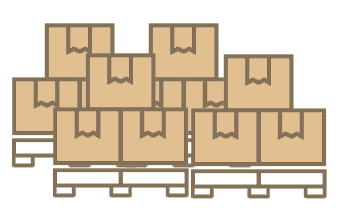 Partial Truckload Shipping: Shipments between 10,000 and 20,000 pounds, or taking up more than 10 pallet spaces, are often moved more cost-effectively as a partial truckload. In these situations, the truckload carrier will analyze the weight and dimensions of the shipment and provide a competitive “all-in” rate quote.
Partial Truckload Shipping: Shipments between 10,000 and 20,000 pounds, or taking up more than 10 pallet spaces, are often moved more cost-effectively as a partial truckload. In these situations, the truckload carrier will analyze the weight and dimensions of the shipment and provide a competitive “all-in” rate quote.
- PROS: Generally produces a lower pricing than standard or volume LTL shipping rates, since shipment only takes up part of the trailer, carrier can sell remaining capacity to another customer to share the costs, many more carrier options.
- CONS: Finding right carrier with capacity is often difficult, predicated on when or where carrier has equipment available, getting quotes takes more time, must vet carrier to ensure safe and reliable.
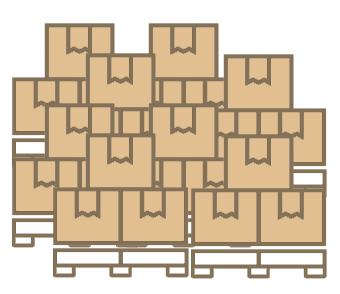 Full Truckload (FTL) Shipping: Shipments over 20,000 pounds are often moved more cost-effectively as a full truckload. In these situations, the carrier will analyze the weight and dimensions of the shipment and provide a competitive “all-in” rate quote.
Full Truckload (FTL) Shipping: Shipments over 20,000 pounds are often moved more cost-effectively as a full truckload. In these situations, the carrier will analyze the weight and dimensions of the shipment and provide a competitive “all-in” rate quote.
- PROS: Generally the most cost-effective way to ship per pound, less susceptible to damages because freight is normally moved door-to-door on one trailer (no re-handlings), many more carrier options.
- CONS: Finding right carrier with capacity is often difficult, predicated on when or where carrier has equipment available, getting quotes take more time, must vet carrier to ensure safe and reliable.
Need help deciding how best to ship your freight the most using the most cost-effective ground transportation mode? Let Logistics Plus help you with a risk-free freight analysis or freight quote.


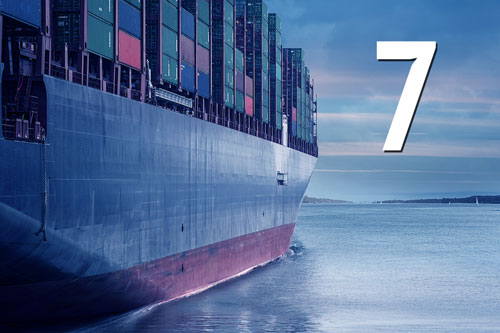
by logisticsplus | Nov 15, 2016 | News
 Here are a few quick, cost-saving tips for importing and exporting from the international air, international ocean, and project cargo freight forwarding experts at Logistics Plus:
Here are a few quick, cost-saving tips for importing and exporting from the international air, international ocean, and project cargo freight forwarding experts at Logistics Plus:
Importing Tips:
- Take the time to confirm your HTS codes before importing. U.S. Customs’ system of classification can be very complicated, and the HTS codes advised by suppliers are not always accurate or match the U.S. classification system 100%. A full cost for imported goods can only be known with the correct HTS codes.
- Keep potential exams in mind when thinking about the transit time, for ocean shipments particularly. An exam can take a week or more, and could be caused by any importer on an LCL consolidation, or a container could be simply selected at random. If goods are time-sensitive, air shipping part or all of the order could save money in the long run.
- Be sure your broker or import forwarder is made aware of all ocean imports well in advance of departure from overseas. An Importer Security Filing (ISF) must be filed timely! Liquidated damages for ISF start at $5,000 for failure to file an ISF, $5,000 for late ISF, $5,000 for inaccurate ISF, $5,000 for an incomplete ISF, and $5,000 for failure to withdraw an ISF. The maximum liquidated damages per ISF filing is $10,000.
Exporting Tips:
- Know your Incoterms®. Incoterms can be a frustrating and confusing to understand; however many exporters do not fully understand the terms to which they are agreeing and, therefore, end up paying more or running into unexpected fees. As an exporter, you need to understand the costs, responsibilities, rights, and obligations that accompany the use of a specific Incoterm. Every quotation or sales order must include a term of sale. If you fail to clearly identify the specific Incoterm to your customer, it can lead to an overestimation or underestimation of the costs associated with the goods you are selling (and a lost sale).
- Research the area to which you are selling. Selling to a new area requires you to keep an open mind. Knowing the market you will be putting your product into can alleviate a lot of the stress with exporting. What currency do they use? What is the local tax or VAT (value-added tax) system? What is the business culture, and/or local culture? When are their holidays or weekends observed?
- Do your paperwork. Know that each country has its own set of importing regulations that require different licenses and customs paperwork. Some countries will require certain stamping, legalizations, or original documents, while others simply accept copies. These vary from country to country, region to region, and with specific commodities.
Most Important Tip:
- Work with an experienced and reputable freight forwarder. An international freight forwarder acts as an agent on your behalf and assists in moving your shipment from its U.S. origin to its foreign destination. Capable freight forwarders are familiar with the import rules and regulations of foreign countries, U.S. import and export regulations, methods of shipping, and required documentation. They can assist you in preparing pricing quotations by providing freight costs, port charges, documentation fees, insurance costs, and handling fees. They can also recommend packaging methods and transportation modes that will best protect your products during transport and ensure they arrive when and where you need them.
Ready to take us up on tip #7? If yes, then click the button below to get started.

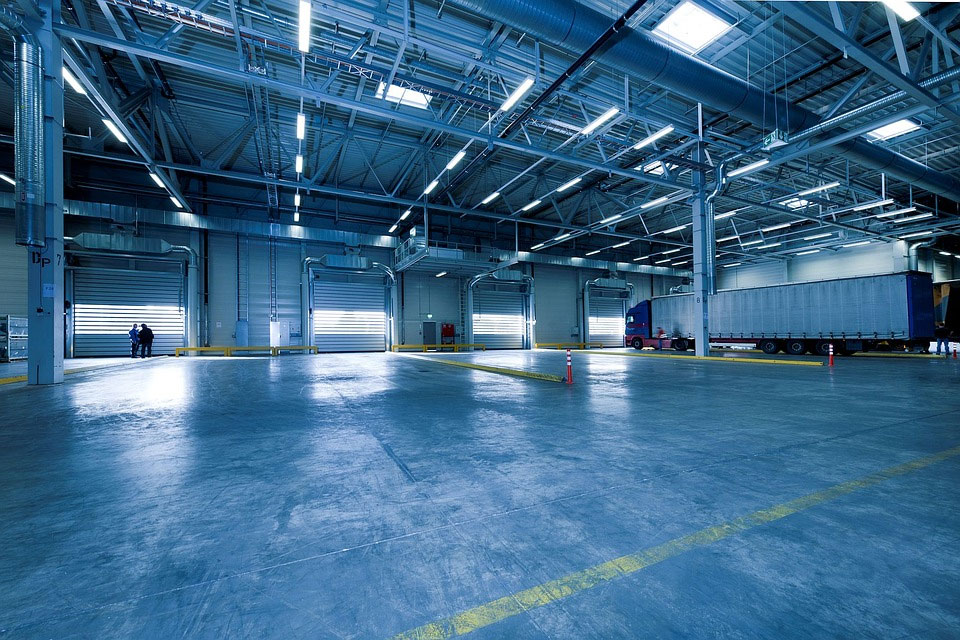
by logisticsplus | Nov 3, 2016 | News
 Warehousing and fulfillment is an increasingly critical aspect of business. By managing the flow of goods through the supply chain, you can effectively control costs, limit exposure to over-stocked inventory, manage cash flows and also streamline transportation. For small startup companies looking to establish a presence in a strategic market or large companies looking to seize opportunity in new areas, or any others in between, third-party logistics (3PL) providers give options that allow businesses to scale efficiently.
Warehousing and fulfillment is an increasingly critical aspect of business. By managing the flow of goods through the supply chain, you can effectively control costs, limit exposure to over-stocked inventory, manage cash flows and also streamline transportation. For small startup companies looking to establish a presence in a strategic market or large companies looking to seize opportunity in new areas, or any others in between, third-party logistics (3PL) providers give options that allow businesses to scale efficiently.
Does it make sense for your business to outsource? Here are 5 key reasons to outsource warehousing and fulfillment to a 3PL provider.
- Flexibility. Utilizing a 3PL warehousing and fulfillment provider allows you the flexibility to set up and scale your distribution model as business demands shift. You can more easily grow into new markets that allow you to service your new customers. By decentralizing distribution, you can offset transportation cost increases due to rising fuel prices or other economic factors. You also have more flexibility with on-hand inventory levels. By not having to justify the cost of filling an entire building, you are able to maintain more appropriate levels of stock and replenish on an as-needed basis. You can also better account for inventory fluctuations due to demand or seasonality.
- Consolidation. A 3PL will provide inventory and transportation consolidation benefits. By housing your inventory under the roof of a 3PL warehouse provider, you allow for multiple shipments to be shipped in a more economical manner than might be possible otherwise. In addition, 3PL providers often have deep discounts with many transportation providers to further help reduce costs.
- Expertise. Proven processes and industry knowledge are key strategic benefits to utilizing a 3PL provider. A process-driven warehousing provider can be a key strategic partner to a business. The difference between warehousing and distributing your products with correct versus incorrect processes can be the determining factor in whether or not you ultimately serve your customer. It can also determine whether or not you might be able to win the customer in the first place. An experienced 3PL partner is able to pass on value-adding benefits that help reduce your costs, drive up your efficiency and allow you to focus on your core business.
- WMS and TMS Solutions. Leveraging a 3PL that has strong technology solutions means you can level the playing field without investing hundreds of thousands of dollars in systems and IT infrastructure. Powerful WMS (warehouse management system) and TMS (transportation management system) capabilities can add huge value to your company. These systems allow for real-time access to detailed inventory information and allow you to forecast upcoming trends. They provide you with instant rate shopping, rate analysis and shipping functionality through a web-based interface. You are even able to leverage these system capabilities across to your customer base directly, giving your company a huge competitive advantage in the market.
- Reduced Fixed Costs. Upfront capital expenditures to acquire warehousing space and infrastructure are huge. A building, racking, staff, fork trucks and lifts, WMS/TMS, conveyors, etc., are just some of the initial investments that easily drive costs into the millions and can cripple cash flows. Spreading out to additional locations grows this exponentially. A 3PL can scale its operations to address your fluctuations in demand, and will allow you the ability to easily forecast the landed cost of each of your products. It also allows you to more effectively spread this cost to the actual sale of the product by significantly reducing the upfront capital costs.
A fully integrated 3PL warehousing and fulfillment strategy allows you to utilize an expert to manage this important aspect of your supply chain. A 3PL provider should be able to provide a road map to how you can most effectively build and maintain your inventory. The provider should be rooted in providing flexible solutions that fit your strategy, technology to allow you all levels of information, process development to drive efficiency and cost reduction, and have the fiscal sense to help you maximize your transportation dollar. Ultimately, having a 3PL provider as a strategic business partner can be the best decision a company can make. Logistics Plus is ready to be your partner.


 Bill of lading accuracy is as important as ever. The BOL is a legally required document that must be completed before a freight shipment is hauled. A BOL protects both the carrier and the shipper. The document contains detailed information on the type, quantity and destination of the goods being carried. The issuance of the BOL is proof that the carrier has received the goods from the shipper, or their 3PL, in apparent good order and condition, as handed over by the shipper.
Bill of lading accuracy is as important as ever. The BOL is a legally required document that must be completed before a freight shipment is hauled. A BOL protects both the carrier and the shipper. The document contains detailed information on the type, quantity and destination of the goods being carried. The issuance of the BOL is proof that the carrier has received the goods from the shipper, or their 3PL, in apparent good order and condition, as handed over by the shipper.




 Parcel Shipping: Shipments under 150 pounds and shipped in cartons (less than 108 inches long and 67 inches wide), rather than on a pallet, are often moved via Parcel shipping with carriers such as USPS, UPS, FedEx or regional courier services.
Parcel Shipping: Shipments under 150 pounds and shipped in cartons (less than 108 inches long and 67 inches wide), rather than on a pallet, are often moved via Parcel shipping with carriers such as USPS, UPS, FedEx or regional courier services.
 Volume Less-Than-Truckload (LTL) Shipping: Shipments between 5,000 and 10,000 pounds, or taking up more than 6 pallet spaces, are often moved more cost-effectively with a “volume” or “spot” quote. In these situations, the carrier will analyze the weight and dimensions of the shipment and provide a competitive “all-in” rate quote.
Volume Less-Than-Truckload (LTL) Shipping: Shipments between 5,000 and 10,000 pounds, or taking up more than 6 pallet spaces, are often moved more cost-effectively with a “volume” or “spot” quote. In these situations, the carrier will analyze the weight and dimensions of the shipment and provide a competitive “all-in” rate quote.
 Partial Truckload Shipping: Shipments between 10,000 and 20,000 pounds, or taking up more than 10 pallet spaces, are often moved more cost-effectively as a partial truckload. In these situations, the truckload carrier will analyze the weight and dimensions of the shipment and provide a competitive “all-in” rate quote.
Partial Truckload Shipping: Shipments between 10,000 and 20,000 pounds, or taking up more than 10 pallet spaces, are often moved more cost-effectively as a partial truckload. In these situations, the truckload carrier will analyze the weight and dimensions of the shipment and provide a competitive “all-in” rate quote.
 Full Truckload (FTL) Shipping: Shipments over 20,000 pounds are often moved more cost-effectively as a full truckload. In these situations, the carrier will analyze the weight and dimensions of the shipment and provide a competitive “all-in” rate quote.
Full Truckload (FTL) Shipping: Shipments over 20,000 pounds are often moved more cost-effectively as a full truckload. In these situations, the carrier will analyze the weight and dimensions of the shipment and provide a competitive “all-in” rate quote.





